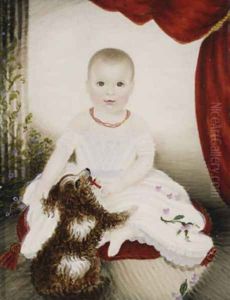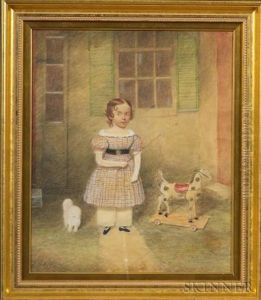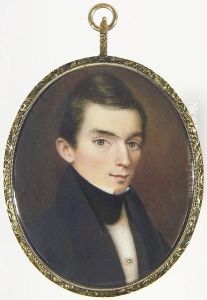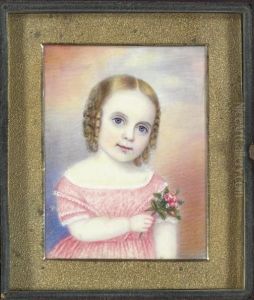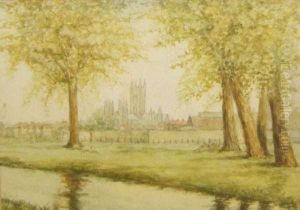Moses B. Russell Paintings
Moses B. Russell, born in 1809, was an American painter known for his miniature portraits, a popular art form during the first half of the 19th century. Born in North Bridgewater, Massachusetts, Russell began his artistic career without any formal training. He was mainly self-taught, developing his skills in the miniature painting tradition that was highly sought after by the American middle class for personal keepsakes and mementos.
Russell worked primarily in Boston, Massachusetts, during his early career. There, he became one of the most distinguished miniature portraitists of his time. His work was characterized by its delicate and detailed execution, often capturing the likeness and character of his sitters with great sensitivity. Miniature portraits were traditionally painted on small pieces of ivory, allowing for a level of detail that larger portraits could not easily replicate. These portraits were typically encased in lockets or small frames, making them intimate objects that could be worn or carried by the owners.
In 1835, Russell married Clarissa Peters, who was also an accomplished artist, known for her floral still lifes. The couple had a strong partnership, with Clarissa sometimes painting the backgrounds of Russell's portraits. In the 1840s, the couple moved to New York City, where Russell continued to thrive as an artist, gaining commissions from a wealth of patrons. His clientele included many prominent figures of the day, reflecting his reputation as a leading miniaturist.
As photography began to emerge as a new technology for portraiture in the mid-19th century, the demand for hand-painted miniatures declined. Despite this technological shift, Russell continued to work in his chosen medium, adapting his style and subjects to suit changing tastes when possible. He also taught miniature painting, sharing his expertise with a new generation of artists.
Moses B. Russell passed away in 1884. Although the popularity of miniature portraits waned with the advent of photography, his work remains an important part of American art history. Today, his portraits are valued not only for their artistic merit but also for their historical significance, providing a window into the styles and personalities of the 19th century. Russell's miniatures can be found in the collections of various museums and are studied for their contribution to the development of American portraiture.
